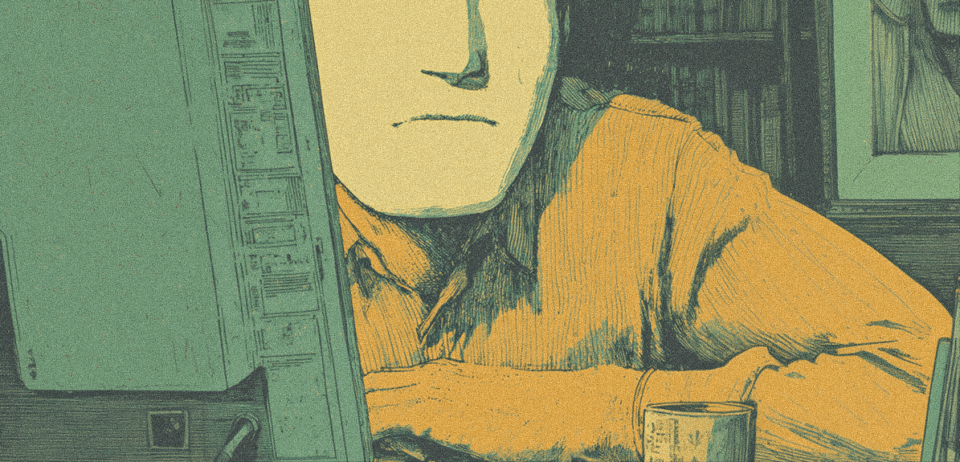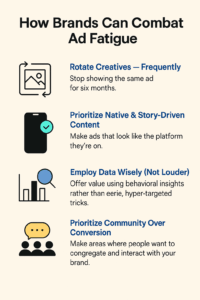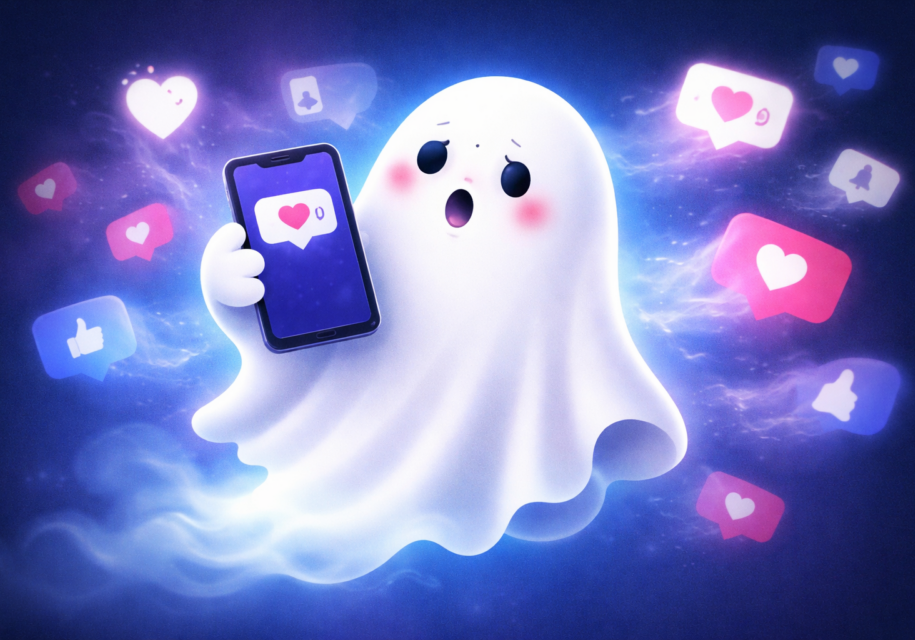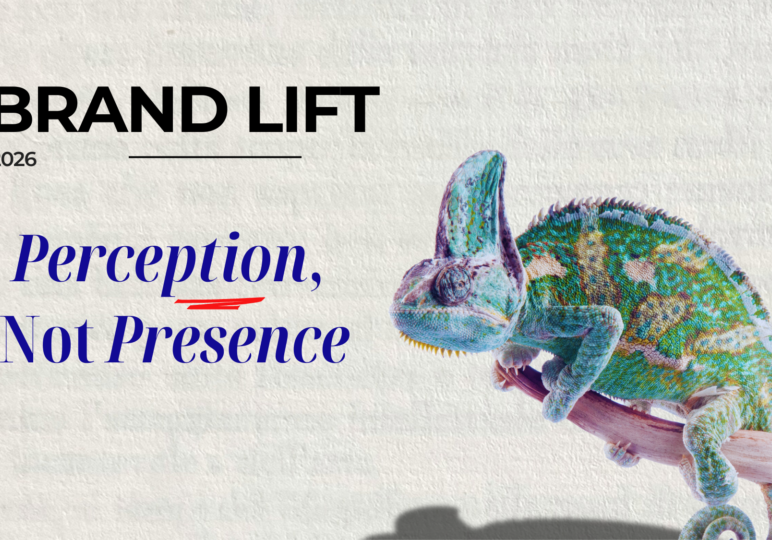
Why Everyone’s Tired of Ads: Inside the Rise of Ad Fatigue in 2025
Let’s face it—advertising is everywhere. It’s in your scroll; between a meme about Mercury in retrograde and your cousin’s wedding photos, it’s loud and obnoxious, wobbling between musical podcast interludes as you search for oneness. Many times, it rudely interrupts moments of silence or takes you out of your YouTube meditation journey. The clever ads, with their catchy slogans and short films worthy of Oscars, are no longer an escape. They’re beginning to feel like a lot.
Welcome to the age of ad fatigue, a contemporary issue that is quite real. Customers aren’t the only ones who are tired of this. Brands, marketers and media are also feeling the effects of the world overrun with marketing messages.
So, how did we end up here? What can brands do, more importantly, when even their greatest content is ignored like yesterday’s lunch
First, let’s understand: what is ad fatigue?
Ad fatigue is not just a buzzword—it’s a full-on consumer sentiment in 2025. As shown by a HubSpot-based survey that indicated a staggering 91% of consumers feel that advertising has become more intrusive than it was in prior years. This is a huge shift in perspective; ads are not only being ignored by people anymore—they are now annoying people. The first level of overload is no longer unique to poor content—creative work with high budgets are also failing simply because of the frequency and placements.
This rising negative sentiment towards advertising is a product of excess and redundancy—brands push similar messages to the same audience through digital platforms until users feel stalked instead of engaged. Engagement can become disruptive rather than delightful—prompting users to install ad blocking software or avoid platforms altogether and skip sponsored content. The takeaway? It is no longer about how good your advertisement is, but rather how frequently and where your ad is being displayed. In this environment, relevancy, restraint and a respect for users’ space are essential.
Sounds weird but true—attention economy is officially maxed out
We used to talk about capturing attention. Now, it’s about earning it -and people are careful with theirs.
A McKinsey research study (2025) shows that there are macro implications from how social media platforms like TikTok, Instagram, and YouTube have systematically shortened attention spans, with average view time on a brand video sitting at just 2.3 seconds. Even the most genius creative campaigns now have a nanosecond to make their mark before they’re lost forever to the scroll.
And such ad fatigue isn’t limited to digital. Consumers are declining podcast ads, muting TV ads, and opting for ad-free products like YouTube Premium and Spotify Plus just to not hear them.
Even good ads aren’t safe
Let’s look at The Barbie Movie marketing campaign—an example of cross-channel advertising done extremely well. Mattel teamed with brands from Crocs to Airbnb, everything from Barbie-branded donuts to Barbie-branded beer was released in a dizzying pink media blitz. Originally the marketing campaign was called brilliant. But when the movie opened, some consumers had already had enough.

Subscribe to our bi-weekly newsletter
Get the latest trends, insights, and strategies delivered straight to your inbox.
A viral post on Reddit titled, “I’m sick of Barbie and I haven’t even seen the movie,” encapsulated the sentiment. It isn’t that the ads were bad. It was that they were ubiquitous.
No matter how good something is, once it’s exhausted, it’s exhausting.
Real Talk: What’s causing the burnout? Let’s unpack:
People are pushed over the brink by a combination of repeated exposure, over-targeting, and continuous exposure. Audiences are resisting more forcefully than ever before, and even well-intentioned efforts are beginning to feel intrusive.
- Algorithm Multiplicity
We all live in algorithm-driven bubbles. As soon as I show interest in one sneaker, I’m inundated with ads for 37 versions of that sneaker. Personalization that was once helpful is becoming creepy.
Unsurprisingly, the 2024 Adobe Digital Trends Report found that 59% of users feel “creeped out” by an overly personalized ad.
- Replication Kills Identity
One campaign can run across 10 different platforms, retarget me multiple times, using the same exact creative. That’s just lazy execution in a time of dynamic, personalized storytelling.
- No Value Exchange
Most ads are just… ads. No value, no humor, no utility. Brands that don’t provide something in return — be it entertainment, use, or inspiration — will get tuned out quickly.
So, What’s Working in 2025?
It’s not all lost. Some companies are abandoning conventional strategies in favor of anti-advertising, a self-aware, frequently funny strategy that emphasizes authenticity over polish. In fact, these brands stand out from the crowd by being humorous and not taking themselves too seriously.
Duolingo’s Unhinged TikToks
The mascot, chaotic TikTok presence of Duolingo has yielded it become a Gen-Z darling, sourcing laughs and trends rather than selling directly.This unfiltered style gives the brand an approachable, human-centered, and shareable nature.

Liquid Death’s “Don’t Buy This” Campaign
In order to distinguish themselves, Liquid Death used irony and anti-branding in their reverse psychology campaign, which advised consumers not to purchase their goods. Its rebellious brand image was reinforced, and engagement was increased by the humor.

These brands are showing us that when ads break format, they break through.
Gen Z and Millennials are way smarter now and calling the shots
If you believe Gen Z is “hard to please” – think again; these generations are purposefully ignoring standard marketing! GWI Trends 2025 Report states Gen Z is 41% more accepting of using ad blockers, and 56% more likely to follow brands that post content that is not product-related.
They do not want to be sold to; they want to be acknowledged, engaged, and respected. If you are not doing that, you are just noise.
You cannot make someone care about your advertisement; you can only make them watch it. The loudest shouters aren’t the businesses that will prevail in 2025. They are the ones who are whispering the appropriate thing in the appropriate voice at the appropriate moment.
Brands, it’s time to rethink the strategy
If your audience’s reaction to your ads is scrolling or eye rolling instead of clicking, then they are tired of your ads. Brands need to stop thinking about how to get attention from consumers and instead think about how to earn their attention. Brands need to move to attention earning, and their approach needs to depend less on saturation, but rather they need to depend more on timing, authenticity, and storytelling. The takeaway is that ad fatigue is not going away. But the brands that adapt are still possible winners.
Here’s how:

- Rotate Creatives—Frequently: Stop showing the same ad for six months. Refresh formats, visuals, and hooks every few weeks to stay relevant.
- Prioritize Native & Story-Driven Content: Make ads that look like the platform they’re on. If you’re on TikTok, make TikToks. Not ads.
- Employ Data Wisely (Not Louder): Screaming someone’s name in the headline is not the same as personalization. Offer value using behavioral insights rather than eerie, hyper-targeted tricks.
- Prioritize Community Over Conversion: Make areas where people want to congregate and interact with your brand. Consider user-generated content challenges, Instagram posts from close pals, or even Discord.
Cut to the chase
Audiences have had enough of being sold to—they simply want to feel seen, heard, and amused. The real opportunity? Trade on a hard sell for real stories and relevance. It is not about making more ads—it is about making meaning. If you are ready to stop interrupting and start connecting, the future of advertising is already here—go find it.


